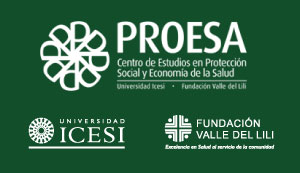Diseño institucional y regulación del sistema de salud, y análisis de política pública aplicado al sector
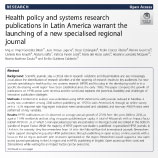
Health policy and systems research publications in Latin America warrant the launching of a new specialised regional journal.
Autor: Miguel González, Juan Arroyo, Oscar Cetrángolo, Pedro Crocco, Ramiro Guerrero, Daniela Riva, Abdul Ghaffar, Patricia Pavón, María del Rocío Saénz, Rosanna González,Beatriz Martínezy Emilio Gutiérrez.
Journal: Health Research Policy and Systems
Publicado: 2020.
Scientific journals play a critical role in research validation and dissemination and are increasingly vocal about the identification of research priorities and the targeting of research results to key audiences. No new journals specialising in health policy and systems research (HPSR) and focusing in the developing world or in a specific developing world region have been established since the early 1980s. This paper compares the growth of publications on HPSR across Latin America and the world and explores the potential, feasibility and challenges of innovative publication strategies.
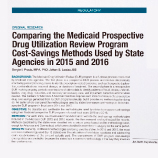
Comparing the Medicaid Prospective Drug Utilization Review Program Cost-Savings Methods Used by State Agencies. Agencies in 2015 and 2016.
Autor: Sergio Prada & Johan Loaiza.
Journal: American Health Drug Benefits.
Publicado: Enero 2019.
The Medicaid Drug Utilization Review (DUR) program is a 2-phase process conducted by Medicaid state agencies. The first phase is a prospective DUR process and involves electronically monitoring prescription drug claims to identify prescription-related problems, such as therapeutic duplication, contraindications, incorrect dosage, or duration of treatment. The second phase is a retrospective DUR involving ongoing, periodic examinations of claims data to identify patterns of fraud, abuse, underutilization, drug–drug interaction, and medically unnecessary care, and implement corrective actions when needed. The Centers for Medicare & Medicaid Services requires each state to measure the prescription drug cost-savings generated from its DUR programs annually, but it provides no methodology for doing so. An earlier article compared the methodologies used by states to measure cost-savings in their retrospective DUR program in fiscal years 2014 and 2015.
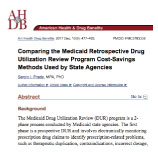
Comparing the Medicaid Retrospective Drug Utilization Review Program Cost-Savings Methods Used by State Agencies.
Autor: Sergio Prada.
Journal: American Health Drug Benefits.
Publicado: Diciembre 2017.
In 2014, the most often used prescription drugs cost-savings estimation methodology for the Medicaid retrospective DUR program was a simple pre-post intervention method, without a comparison group (ie, 12 states). In 2015, the most common methodology used was a pre-post intervention method, with a comparison group (ie, 14 states). Comparisons of savings attributed to the program among states are still unreliable, because of a lack of a common methodology available for measuring cost-savings.
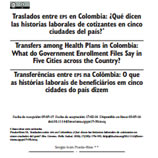
Homicides, Public Goods, and Population Health in the Context of High Urban Violence Rates in Cali, Colombia.
Autores: Lina Martínez, Sergio Prada, Daniela Estrada.
Journal: Journal of Urban Health.
Publicado: Diciembre 2017.
Abstract: Obesity and frequent mental and physical distress are often associated with major health problems. The characteristics of the urban environment, such as homicide rates and public goods provision, play an important role in influencing participation in physical activity and in overall mental health. This study aimed to determine whether there was a relationship between homicide rates and public goods provision on the health outcomes of the citizens of Cali, Colombia, a city known for its high urban violence rate and low municipal investment in public goods. We used a linear probability model to relate homicide rates and public goods provision (lighted parks, effective public space per inhabitant, and bus stations) at the district level to health outcomes (obesity and frequent mental and physical distress). Individual data were obtained from the 2014 CaliBRANDO survey, and urban context characteristics were obtained from official government statistics. After controlling for individual covariates, results showed that homicide rates were a risk factor in all examined outcomes. An increase in 1.0 m2 of public space per inhabitant reduced the probability of an individual being obese or overweight by 0.2% (95% confidence interval (CI) = − 0.004 to − 0.001) and the probability of frequent physical distress by 0.1% (95% CI = − 0.002 to − 0.001). On average, the presence of one additional bus station increased the probability of being obese or overweight by 1.1%, the probability of frequent mental distress by 0.3% (95% CI = 0.001–0.004), and the probability of frequent physical distress by 0.02% (95% CI = 0.000–0.003). Living in districts with adequate public space and lighted parks lowers the probability of being obese and high homicide rates, which are correlated with poor health outcomes in Cali, Colombia. Investments in public goods provision and urban safety to reduce obesity rates may contribute to a better quality of life for the population.

A social network analysis of substance use among immigrant adolescents in six European cities, Social Science & Medicine.
Autores: Vincent Lorant, Victoria Soto Rojas, Laia Bécares, Jaana M. Kinnunen, Mirte A.G. Kuipers, Irene Moor, Gaetano Roscillo, Joana Alves, Adeline Grard, Arja Rimpelä, Bruno Federico, Matthias Richter, Julian Perelmang, Anton E. Kunst.
Journal: Social Science & Medicine.
Publicado: Octubre de 2016.
Resumen: El objetivo de esta investigación fue describir la composición de las redes sociales de los adolescentes de acuerdo a sus antecedentes migratorios, y examinar cómo las redes sociales están asociadas con el uso de sustancias.
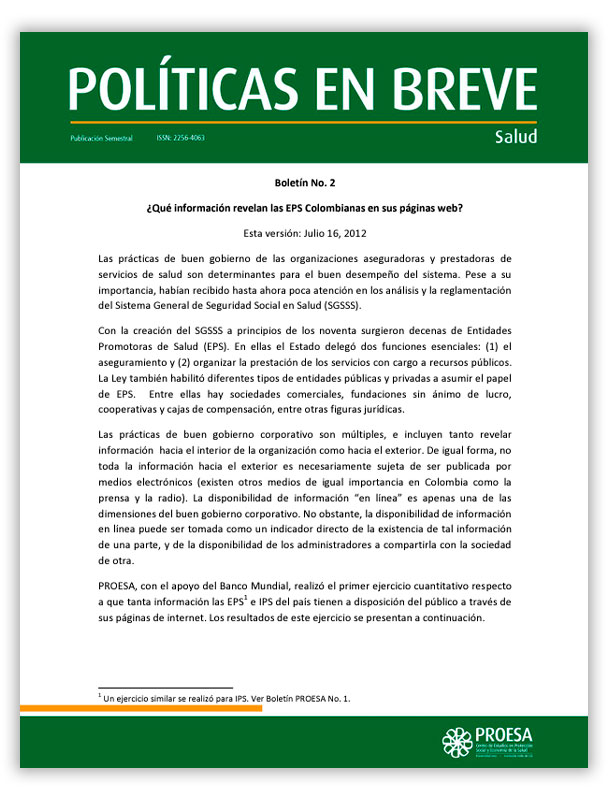
Políticas en Breve 02
¿Y cuánto es el gasto de bolsillo en salud?
Febrero de 2013
Esta nota de política tiene como objetivo discutir las estrategias que se han implementado para la prevención del embarazo precoz y el éxito que han mostrado en el empoderamiento de las mujeres hacia un ejercicio adecuado de sus derechos sexuales y reproductivos y la construcción de una sociedad resiliente.

